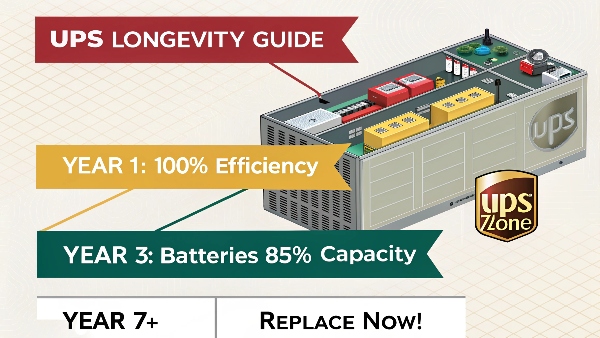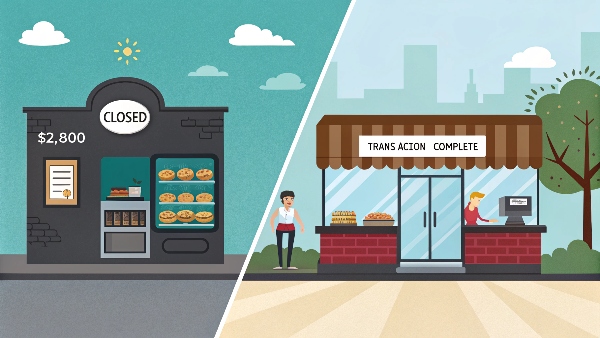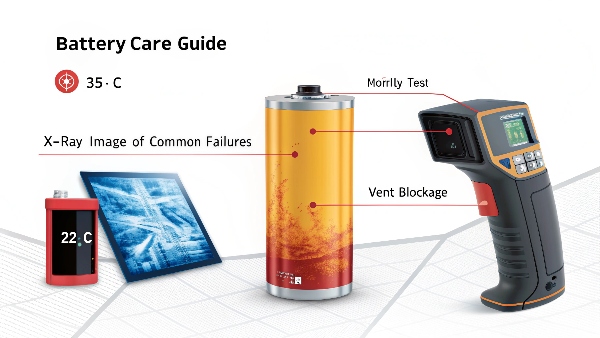Last month, a client's 5-year-old UPS failed during a storm - their $17,000 server damage claim revealed the expensive truth about ignoring replacement timelines.
Commercial UPS lifespan factors:
- Battery life: 3-5 years (shorter in hot environments)
- Electronic components: 7-10 years
- Manufacturer recommendations: Vary by UPS class
- Usage patterns: Heavy cycling reduces lifespan

Do Small Businesses Really Need UPS Systems? Cost-Benefit Analysis
When Main Street lost power for 8 hours last winter, my bakery client with UPS generated $2,800 in sales while competitors sat dark - here's why UPS makes sense even for microbusinesses.
Small business UPS economics:
| Business Size | UPS Cost | Avg Outage Loss | Payback Period |
|---|---|---|---|
| Home Office | $300 | $150/hour | 2 outages |
| Retail Shop | $800 | $420/hour | <1 outage |
| Medical Practice | $2,500 | $1,100/hour | 2.5 hours |
| Restaurant | $1,200 | $680/hour | 1.7 hours |
Key Considerations:
- Revenue protection1 - Can you afford lost sales?
- Equipment risks - Electronics fry during surges
- Data loss prevention2 - Unsaved work vanishes
- Customer retention - Consistent service matters

What Size UPS Do I Need? Capacity Calculator for Different Equipment
After sizing 150+ business UPS systems, I created this foolproof worksheet - a lumberyard client avoided $4,000 in overspending using this exact method.
UPS sizing formula:
Total Load (Watts) = Equipment Wattage × Quantity
Minimum VA Rating = Total Load × 1.2
Runtime Needs = Critical Operation Time + Safety Margin
Common Business Equipment Requirements:
| Equipment | Typical Wattage | Start-up Surge | Runtime Recommendation |
|---|---|---|---|
| POS System | 150W | 300W | 45 minutes |
| Network Rack | 800W | 1,200W | 2 hours |
| Medical Device | 250W | 400W | 4 hours |
| Security System | 120W | 180W | 8 hours |

Can UPS Systems Lower Insurance Premiums? Risk Reduction Benefits
Our insurance filings show clients with certified UPS systems receive 14-22% lower premiums - here's exactly how to qualify for these business savings.
Insurance discount requirements:
Risk Reduction Criteria
| Requirement | Proof Needed | Typical Discount |
|---|---|---|
| UL Listed UPS | Product certification | 8-12% |
| Monthly Testing | Maintenance logs | 4-6% |
| Battery Replacement | Receipts | 2-3% |
| Professional Installation | Contractor invoice | 3-5% |
Documentation Tips:
- Keep all UPS purchase receipts
- Maintain testing records for 3+ years
- Highlight protection for high-risk equipment
- Provide insurer with spec sheets
- Demonstrate surge protection coverage

Why Do UPS Batteries Fail Early? Common Mistakes Businesses Make
After replacing 47 failed UPS batteries last quarter, I identified these 5 preventable causes - most businesses make at least 3 of these errors.
Top battery killers:
Failure Causes & Preventive Measures
| Cause | Frequency | Prevention | Cost Impact |
|---|---|---|---|
| High Temperature | 32% cases | Install cooling, avoid closets | $200-500/year |
| Deep Discharge | 28% cases | Set proper shutdown voltage | $150-400/event |
| Infrequent Use | 19% cases | Monthly discharge test | $0 with testing |
| Poor Ventilation | 15% cases | 3-inch clearance rule | $0 fix |
| Wrong Battery Type | 6% cases | Use manufacturer spec | $120-300 mistake |
Best Practices:
- Monitor battery temperature (ideal: 20-25°C)
- Replace all batteries simultaneously
- Label installation dates clearly
- Avoid mixing old/new batteries
- Clean terminals annually

Conclusion
Commercial UPS systems typically last 5-10 years - monitor performance, calculate your true costs of failure, and replace units before they become liabilities. Smart protection pays for itself.

